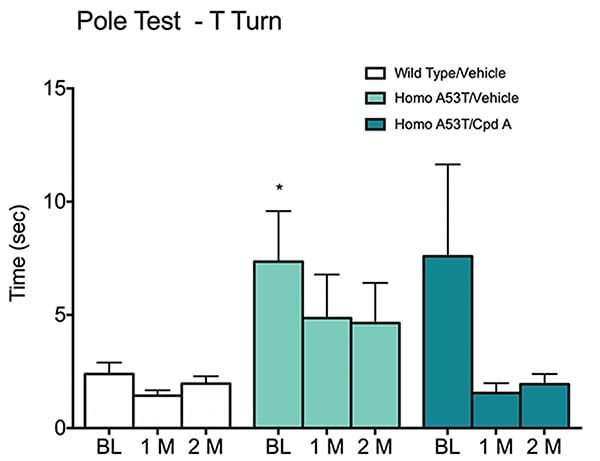Pole Test
Discover how Melior’s unique phenotypic screening platforms can uncover the untapped value of your candidate therapeutic
The pole test is a widely used test to assess basal ganglia related movement disorders in mice. The procedure evaluates the ability of a mouse to grasp and maneuver on a pole in order to descend to its home cage. Mice are trained to complete the pole test over two training trials. Mice are placed with their head oriented upward on top of the pole. The animals will often naturally orient themselves downward and descend the length of the pole in order to return to their home cage. The time required for the animals to orient themselves facing in a downward direction (time to T turn) and to descend to the base of the pole (total time) is recorded for five trials.
Ready to get started or looking for a custom model?
Contact us today for more information about our bespoke research models and to discuss how we can help you answer your unique research questions.

Performance of mice in the Pole Test, measuring time to a T-turn. Homozygous type A53T alpha-synuclein transgenic (B6;C3-Tg(PmpSNCA*A53T)83Vle/J) and age-matched wild type (non-carrier littermate) animals were tested at the age of 10.5 month (baseline) and 1 and 2 month after treatment with vehicle or Compound A. *P<0.05, compared to BL WT group.
The pole test is suited for studies with mice. The procedure generally takes about a week to complete in consideration of training days that are involved. Since it is non-invasive it can be repeated over time and is well suited to incorporate into chronic studies over several time points.
Frequently Asked Questions
A pole test is an effective behavioral test to monitor locomotor activity. This test could be performed in mice with a variety of locomotor diseases, including MPTP-treated mice (simulating Parkinson’s).
Absolutely! Many other behavioral and motor function experiments (such as rotorod and grip strength) can be performed on these animals to get a full picture of the motor dysfunction.
Generally we can start a study like this within 2 weeks.
Synonyms: motor function, movement disorder model, Parkinson's disease


 Interested in running a Pole Test study?
Interested in running a Pole Test study?